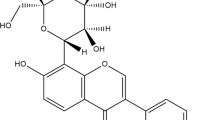Abstract
The alpha7 nicotinic acetylcholine receptor (α7-nAChR) is considered a promising pharmacological target for the carcinoma therapy. We have previously shown that the recombinant analogue of the human protein SLURP-1 (rSLURP-1) effectively inhibits the growth of carcinomas of various origins via the interaction with α7-nAChR and down-regulation of expression of this receptor. Expression of α7-nAChR is increased in gliomas compared to healthy human brain tissues; however, the role of this receptor in the gliomas development is poorly understood. It was shown for the first time that rSLURP-1 significantly inhibits the growth of glioma model cells U251 MG and A172 up to ∼70%, which is comparable with the effect of α-bungarotoxin, a selective α7-nAChR inhibitor. The half-maximum effective concentrations of rSLURP-1 for U251 MG and A172 cells were 2.82 ± 0.2 and 8.9 ± 0.3 nM, respectively. Coincubation of U251 MG cells with rSLURP-1 and the nAChR inhibitor mecamylamine attenuates the antiproliferative activity of rSLURP-1, indicating nAChR as a molecular target for the rSLURP-1 action in gliomas.



Similar content being viewed by others
REFERENCES
Ostrom, Q.T., Gittleman, H., Truitt, G., et al., CBTRUS Statistical Report: Primary Brain and Other Central Nervous System Tumors Diagnosed in the United States in 2011–2015, Neuro-Oncology, 2018, vol. 20, pp. iv1–iv86.
Wang, S. and Hu, Y., α7 nicotinic acetylcholine receptors in lung cancer, Oncol. Lett., 2018, vol. 16, pp. 1375–1382.
The UCSC Xena platform for public and private cancer genomics data visualization and interpretation bioRxiv.
Chernyavsky, A.I., Arredondo, J., Galitovskiy, V., et al., Upregulation of nuclear factor-κB expression by SLURP-1 is mediated by α7 -nicotinic acetylcholine receptor and involves both ionic events and activation of protein kinases, Am. J. Physiol.—Cell Physiol., 2010, vol. 299, pp. 903–911.
Loughner, C.L., Bruford, E.A., McAndrews, M.S., et al., Organization, evolution and functions of the human and mouse Ly6/uPAR family genes, Hum. Genomics, 2016, vol. 10, p. 10.
Pettersson, A., Nylund, G., Khorram-Manesh, A., et al., Nicotine induced modulation of SLURP1 expression in human colon cancer cells, Auton. Neurosci., 2009, vol. 148, pp. 97–100.
Russo, P., Cardinale, A., Margaritora, S., et al., Nicotinic receptor and tobacco-related cancer, Life Sci., 2012, vol. 91, pp. 1087–1092.
Arredondo, J., Chernyavsky, A.I., and Grando, S.A., SLURP-1 and -2 in normal, immortalized and malignant oral keratinocytes, Life Sci., 2007, vol. 80, pp. 2243–2247.
Bergqvist, C., Kadara, H., Hamie, L., et al., SLURP-1 is mutated in Mal de Meleda, a potential molecular signature for melanoma and a putative squamous lineage tumor suppressor gene, Int. J. Dermatol., 2018, vol. 57, pp. 162–170.
Throm, V.M., Mannle, D., Giese, T., et al., Endogenous CHRNA7-ligand SLURP1 as a potential tumor suppressor and anti-nicotinic factor in pancreatic cancer, Oncotarget, 2018, vol. 9.
Lyukmanova, E.N., Shulepko, M.A., Kudryavtsev, D., et al., Human secreted Ly-6/uPAR related protein-1 (SLURP-1) is a selective allosteric antagonist of α7 nicotinic acetylcholine receptor, PLoS One, 2016, vol. 11. e0149733.
Lyukmanova, E., Bychkov, M., Sharonov, G., et al., Human secreted proteins SLURP-1 and SLURP-2 control the growth of epithelial cancer cells via interactions with nicotinic acetylcholine receptors: Actions of human SLURP proteins on cancer cells, Br. J. Pharmacol., 2018, vol. 175, pp. 1973–1986.
Shulepko, M.A., Bychkov, M.L., Shlepova, O.V., et al., Human secreted protein SLURP-1 abolishes nicotine-induced proliferation, PTEN down-regulation and α7-nAChR expression up-regulation in lung cancer cells, Int. Immunopharmacol., 2020, vol. 82, p. 106303.
Bychkov, M., Shenkarev, Z., Shulepko, M., et al., Water-soluble variant of human Lynx1 induces cell cycle arrest and apoptosis in lung cancer cells via modulation of α7 nicotinic acetylcholine receptors, PLoS One, 2019, vol. 14. e0217339.
Funding
This work was supported by the Russian Science Foundation (project no. 17-74-20161).
Author information
Authors and Affiliations
Corresponding author
Ethics declarations
The authors declare that they have no conflict of interest. This article does not contain any studies involving animals or human participants performed by any of the authors.
Additional information
Translated by M. Batrukova
Rights and permissions
About this article
Cite this article
Shulepko, M.A., Bychkov, M.L., Lyukmanova, E.N. et al. Recombinant Analogue of the Human Protein SLURP-1 Inhibits the Growth of U251 MG and A172 Glioma Cells. Dokl Biochem Biophys 493, 211–214 (2020). https://doi.org/10.1134/S1607672920040134
Received:
Revised:
Accepted:
Published:
Issue Date:
DOI: https://doi.org/10.1134/S1607672920040134




